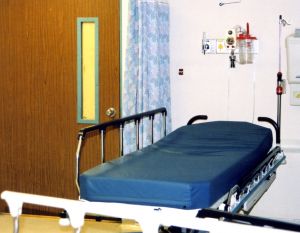
Wireless Capabilities
Digital medical devices either need to be compact or offer auxiliary handheld interfaces in proximity to a larger device that controls the main function. Determine whether your product will have a separate remote control keypad or if the medical keypad molding will be incorporated into the device. Will it need to communicate with other devices and machines? Custom rubber keypads can provide these capabilities. Alpha-numeric or QWERTY designs are just two of numerous options for digital communications.
Lighting
Fluorescent lighting is commonplace in hospitals and urgent care facilities. The lettering on the medical keypad molding should be easy to read in fluorescent and dimly lit conditions. Choose colors, symbols and fonts that create a contrast between graphics and the background. Avoid using faceplates in the design that will create a glare over the cover, making it difficult to read the keys and faceplate.
Is this a device that will be used in a dark room? Backlit rubber keypads are more visible in darker environments. It may help to have the entire keypad illuminate to make each button easier to find. The easier it is to use, the more likely it is to be successful on the market. If there is ample lighting, backlighting is unnecessary and may be distracting to users.
Size
How large the medical device keypad and buttons are affect usability. Small buttons allow for more versatility and a wider range in choice of functions. If the buttons are too small, the user’s fingertips will inadvertently strike and activate surrounding buttons. If users are wearing loose-fitting gloves, they may need an even larger button and additional space surrounding each key to avoid touching and activating other functions.
The larger the buttons are on the medical keypad molding, the larger the device needs to be, or fewer buttons should be used. Consider which function keys are critical to your product’s capabilities and how large the user interface portion of it will be.
Labeling
How much information the user receives at a glance greatly affects usability. Will your users know which buttons to push by a single symbol? How can you succinctly communicate the meaning of each button? Consider the use of colors, letters, words, specific languages and universal symbols. Laser etching or silk screening that won’t fade or deteriorate is also an important element for digital medical device design. Any descriptive graphics on the faceplate of the interface surrounding the custom rubber keypads should also be legible and in contrast to the background.
If you are planning a new product that includes medical keypad molding and user interface design, SiTECH can manufacture custom rubber keypads to match detailed and specific designs. We are located in Virginia, so are products are made in the USA. Contact us today to learn more about how we can help you create a better, more usable product with custom rubber keypads and silicone rubber components.








